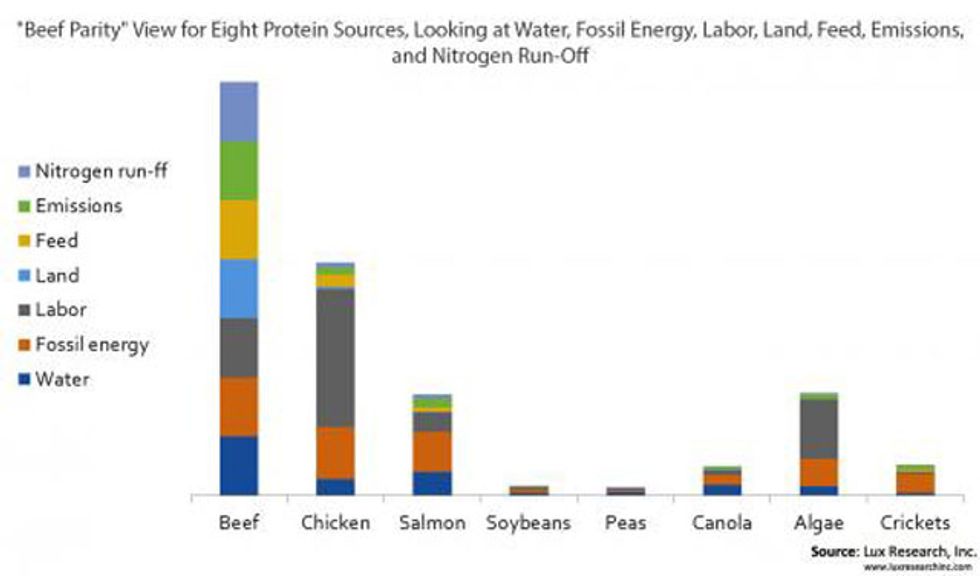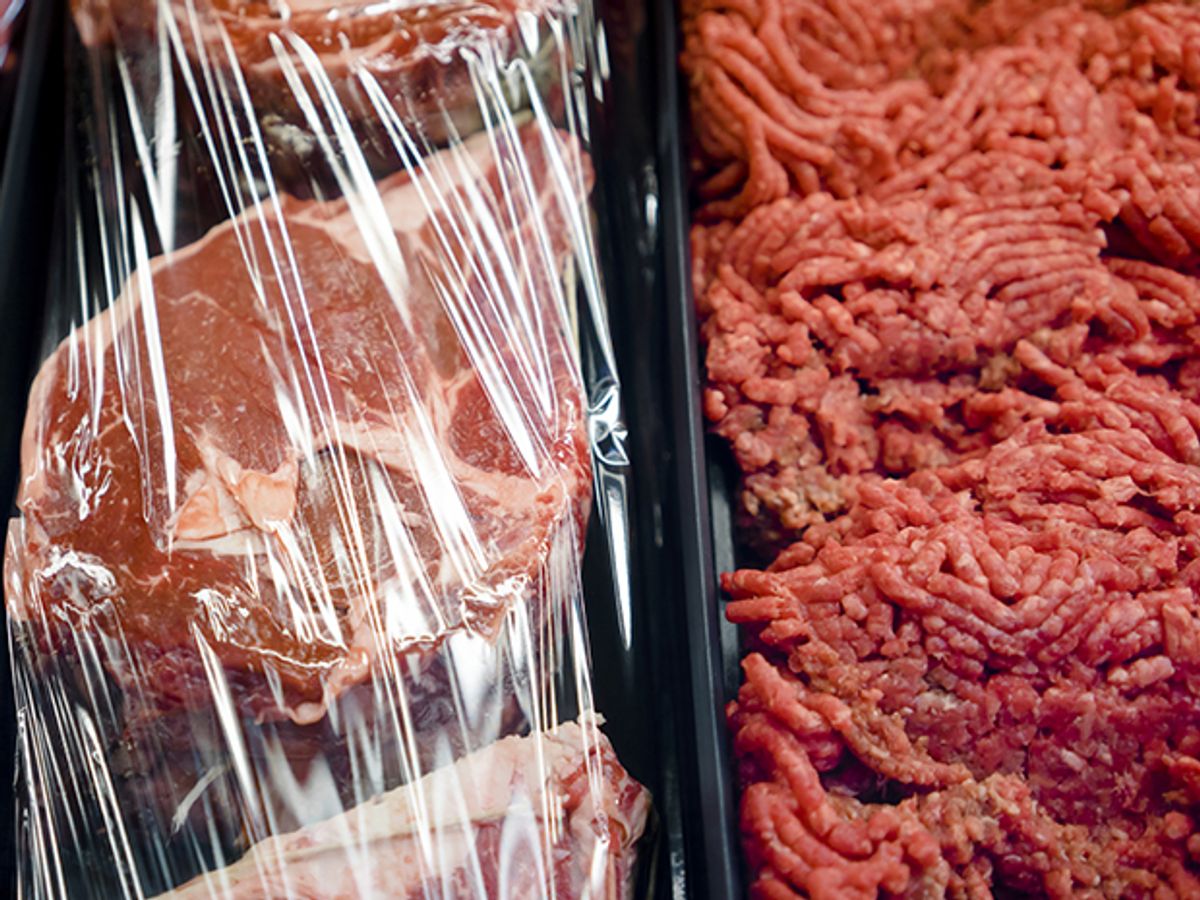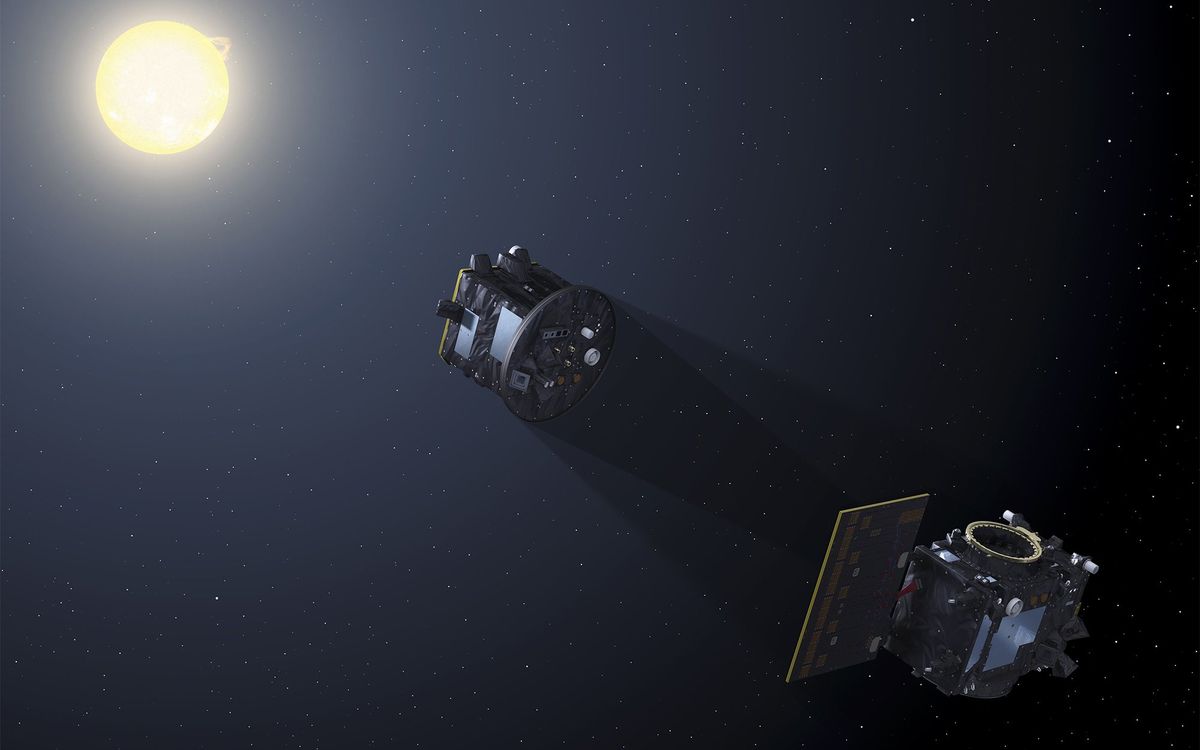The global shortlist of security concerns just became a bit longer: border security, cyber security, economic security, water security and now, protein security.
Access to high quality protein sources, beef or otherwise, is increasingly challenging for companies and nations as more of world’s population adopts Western diets, according to a new study from Lux Research.
With the considerable water and energy requirements to grow beef and many other protein sources, the research is meant to help stakeholders understand how to increase the amount of protein produced without jeopardizing environmental resources.
The study looked at protein production data from more than 100 publications. The researchers then compared all of the protein sources across their entire life cycle. Each protein source was then benchmarked using the concept called “beef parity”, the total resource requirement and risk involved to produce the equivalent of 1 kilogram of beef protein.
Of course, many global health experts would argue that this type of research misses the point, as Western, and primarily American, diets are too laden with meat in general, and beef in particular. But the researchers argue that meeting a predicted 20 percent increase in global protein consumption over the next decade requires rigorous research that allows stakeholders to better understand which sources should be prioritized given local resources.

“Our analysis demonstrates that there is no ‘one size fits all’ solution to protein resource use intensity,” Camilla Stice, Lux Research analyst and lead author of the report, said in a statement. “No single protein source emerges as a runaway winner, and each analyzed source has opportunities for improvement – whether in protein quality, ease of production, or overall resource intensity. Small changes to production can have cascading impacts throughout the supply chain that could mitigate resource risk or make it worse.”
The analysis required juggling many variables. Production methods of caged versus free-range animals, local water use, feed input, and local electricity generation are all highly variable. For most inputs, the researchers used an average of industrialized methods, and the U.S. electricity generation mix was used for energy input.
Water is a major consideration. Agriculture consumes the lion’s share of human water use, more than 90 percent. About one-third of that is used for animal production. Some crops are also highly water dependent, however, such as Canola, which requires more water per kilogram of protein than soy or peas.
Although results are highly location specific, the report concludes that it takes an average of 380 megajoules of primary energy to produce 1 kilogram of beef protein, the equivalent of about 11 liters of gasoline. Chicken came in second at 340 MJ per kilogram and salmon was third at 260 MJ per kilogram. Most of the other sources were far lower.
The results of the study suggest what many Westerners might not want to hear: everyone should be eating far less beef and maybe more peas and crickets.
The researchers intended the data to be used by businesses looking to maximize yield and think critically about where to site production facilities, as well as validate claims for better resource consumption.
The framework for addressing risk in protein production, however, only validates a larger body of research that already exists: diets heavy in meat are the most environmentally damaging and there is vast room for efficiencies across the global food production system.



